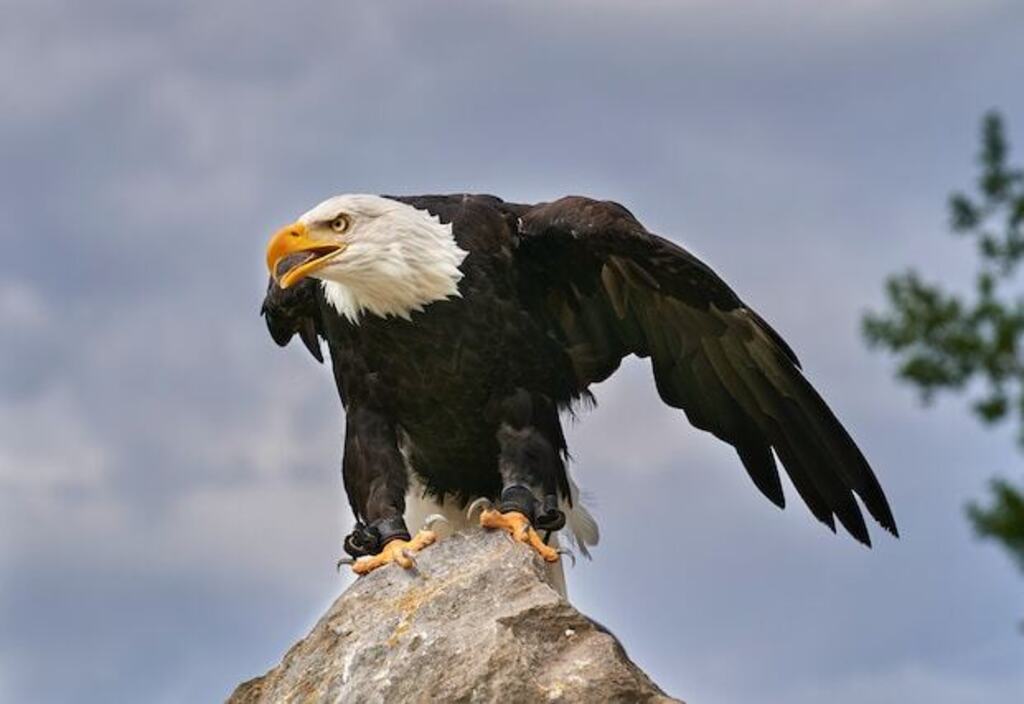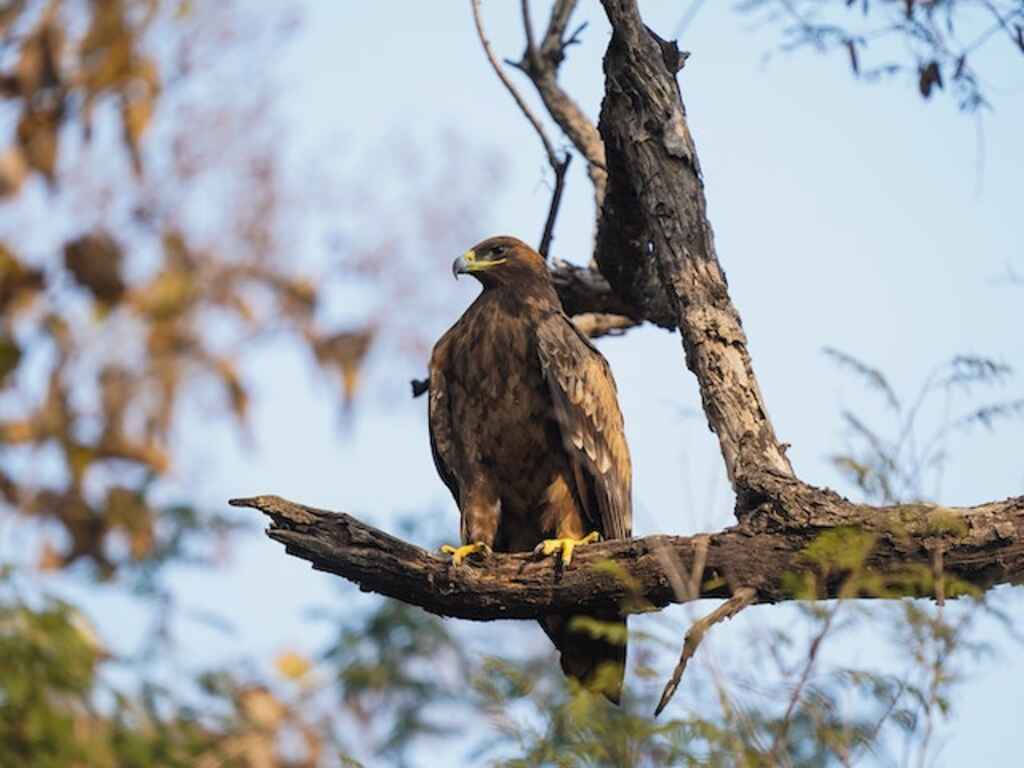Do Eagles Eat Mice? Join us on a whimsical journey into the fascinating world of eagle dining habits.
Brace yourself for the answer, surprising anecdotes, and a captivating exploration of these majestic birds’ appetite for adventure.
Get ready to witness nature’s predator in action!
Table of Contents
- 1 Key Takeaways
- 2 Eagles’ Hunting Techniques
- 3 Do Eagles Eat Mice
- 4 The Role of Mice in Eagles’ Diet
- 5 Eagles’ Adaptations for Hunting Mice
- 6 Ecological Impact of Eagles’ Predation on Mice
- 7 Eagles’ Other Prey and Diet Diversity
- 8 The Fascinating Relationship Between Eagles and Mice
- 9 Conservation and Protection Efforts
- 10 The Symbolism of Eagles
- 11 Research and Field Studies
- 12 Frequently Asked Questions
- 13 Conclusion
- 14 Author
Key Takeaways
- Eagles have efficient hunting techniques and adaptations like exceptional eyesight and powerful talons for capturing mice with precision.
- Eagles’ predation on mice helps control rodent populations, prevent overpopulation, and maintain ecosystem balance.
- The presence of eagles influences the behavior and distribution of mice, highlighting the interplay between the two species.
- Understanding prey selection and impact is crucial for comprehending ecosystem dynamics and the role of eagles in controlling rodent populations.
Eagles’ Hunting Techniques
Eagles employ highly efficient hunting techniques to capture their prey, such as mice, with unparalleled precision and mastery, showcasing their awe-inspiring predatory skills.
These magnificent birds have evolved various adaptations that enable them to excel in hunting mice.
Eagles possess keen eyesight, with visual acuity that surpasses that of humans, allowing them to spot even the smallest movements of their prey from great distances.
Additionally, their powerful wings enable them to soar high in the sky, providing them with a vantage point from which they can locate and track potential prey.
Once the eagles have identified a mouse, they swoop down with astonishing speed and agility, using their sharp talons to grasp and immobilize their target.
Their hunting techniques are a testament to their remarkable ability to survive and thrive in their natural environment.
Transitioning into the subsequent section, it becomes evident that the role of mice in eagles’ diet is crucial in sustaining their predatory lifestyle.
Do Eagles Eat Mice
Yes, eagles are known to eat mice. As opportunistic predators, eagles have a diverse diet that includes small mammals, birds, fish, and reptiles. Mice make up a part of their prey, particularly for smaller eagle species.
The Role of Mice in Eagles’ Diet
Rodents, such as mice, play a significant role in the diet of several avian predators. Eagles, being one of these predators, rely on mice as a crucial food source.
Their consumption of mice not only sustains the eagles themselves, but also has broader implications for ecosystems.
By preying on mice, eagles help regulate rodent populations, preventing excessive population growth that could have detrimental effects on vegetation and other animals.
This delicate balance between eagles and mice is essential for maintaining a healthy ecosystem. To convey this interplay, the following table illustrates the impact of eagles on rodent populations:
| Role of Eagles in Ecosystems | Impact on Rodent Populations |
|---|---|
| Predation | Regulates population growth |
| Scavenging | Controls rodent numbers |
| Nesting Habitat | Influences rodent behavior |
Understanding the role of mice in the diet of eagles provides insight into the adaptations these birds have developed for hunting mice without explicitly describing the steps involved.
Eagles’ Adaptations for Hunting Mice
With a keen eye and lightning-fast reflexes, nature’s skilled hunters skillfully track down their elusive prey, employing adaptations honed over millennia.
Eagles, known for their predatory prowess, possess a range of hunting strategies specifically adapted for capturing mice.
These strategies include their exceptional eyesight, which allows them to spot small movements from great distances, and their powerful talons, which can swiftly immobilize their prey.
Eagles also possess sharp, curved beaks that enable them to tear through the flesh of their captured mice.
Their hunting techniques have a significant impact on rodent populations, as they help regulate their numbers and prevent overpopulation.
Furthermore, the presence of eagles in an ecosystem can influence the behavior and distribution of mice, leading to cascading effects throughout the food chain.
This ecological impact of eagles’ predation on mice will be explored in the subsequent section.
Ecological Impact of Eagles’ Predation on Mice
The predation of eagles on mice has significant ecological implications, affecting the balance of rodent populations and influencing the dynamics of the surrounding ecosystem.
By preying on mice, eagles play a crucial role in population control, as their predation helps regulate the mouse population size.
This is particularly important because mice are known to reproduce rapidly and can become pests when their numbers go unchecked.
The ecological consequences of eagles’ predation on mice extend beyond population control.
For example, the presence of eagles can alter the behavior and distribution of mice, causing them to avoid certain areas or change their foraging patterns.
This, in turn, can have cascading effects on other species that depend on mice as a food source.
Understanding the ecological impact of eagles’ predation on mice is essential for managing and conserving the delicate balance of ecosystems.
In the subsequent section, we will explore the broader prey diversity of eagles and how it contributes to their ecological role.
Eagles’ Other Prey and Diet Diversity
Prey diversity is a key component of eagles’ ecological role, as they consume a wide range of organisms from various trophic levels, including small mammals, birds, fish, and reptiles.
This diversity in their diet is essential for maintaining the balance of ecosystems they inhabit.
Eagles’ foraging behavior is characterized by their ability to adapt to different environments and exploit available food sources.
By consuming a variety of prey species, eagles play a crucial role in controlling populations of small mammals, such as mice.
This impact on rodent populations can have cascading effects on the entire ecosystem, influencing the abundance and distribution of other organisms.
Understanding the fascinating relationship between eagles and mice provides valuable insights into the intricate web of interactions that shape our natural world.
The Fascinating Relationship Between Eagles and Mice
The relationship between eagles and mice is a fascinating topic to explore, as it encompasses various aspects such as coexistence and competition, predator-prey dynamics, and evolutionary adaptations.
Eagles and mice coexist in many ecosystems, with mice serving as a significant source of food for eagles.
This relationship is shaped by the complex predator-prey dynamics, where eagles employ various hunting strategies to capture mice, while mice have evolved adaptations to avoid predation.
Coexistence and Competition
Coexistence and competition between eagles and mice can be observed in their shared habitat, but how do these two species interact and influence each other’s survival?
In terms of coexistence, eagles and mice have adapted to live in the same environment without directly competing for resources.
While eagles primarily feed on larger prey such as fish and small mammals, mice rely on vegetation and small insects for sustenance.
This difference in diet allows both species to find their own niche within the ecosystem and minimize direct competition.
However, competition can still arise indirectly through resource availability and habitat suitability.
For example, if the mouse population increases, it may deplete vegetation, making it harder for eagles to find prey.
Conversely, if the eagle population surges, it can put pressure on the mouse population, potentially reducing their numbers.
Understanding these dynamics is crucial for comprehending the intricate balance between these species and the overall ecosystem.
Transitioning into the subsequent section about ‘predator-prey dynamics’, it is important to examine how eagles’ predation on mice influences population dynamics and ecosystem stability.
Predator-Prey Dynamics
Predator-prey dynamics are a fundamental aspect of ecological systems, shaping population sizes and influencing the stability of ecosystems.
When considering the relationship between eagles and mice, understanding the eagles’ hunting techniques is crucial.
Eagles, as birds of prey, possess sharp talons and strong beaks that allow them to capture and kill their prey effectively.
They use their exceptional vision to spot mice from high altitudes and then swoop down to catch them.
Mice, on the other hand, play an essential role in the eagles’ diet as a primary food source. The abundance of mice population directly impacts the eagles’ hunting success and their overall survival.
This interdependence between eagles and mice highlights the intricate nature of predator-prey dynamics.
Transitioning into the subsequent section about evolutionary adaptations, it is fascinating to explore how both eagles and mice have evolved to enhance their hunting and defense mechanisms.
Evolutionary Adaptations
Evolutionary adaptations have played a vital role in shaping the hunting and defense mechanisms of both eagles and mice.
Eagles, as apex predators, exhibit a range of behavioral and physical adaptations that enable them to efficiently capture and consume their prey.
For instance, their keen eyesight allows them to spot potential prey from great distances, while their sharp talons and strong beaks facilitate the capture and consumption of small animals like mice.
On the other hand, mice have evolved various adaptations to avoid predation by eagles.
They have developed an acute sense of hearing, enabling them to detect the approaching predators, and their small size and ability to hide in burrows or under vegetation provide them with concealment opportunities.
Moreover, some mouse species have even evolved warning signals or toxic secretions as a defense mechanism.
These evolutionary adaptations highlight the intricate prey-predator dynamics at play in nature.
| Eagle Behavior | Predatory Adaptations |
|---|---|
| Keen Eyesight | Sharp Talons |
| Strong Beaks | |
These adaptations have allowed eagles to become highly efficient predators, while mice have developed strategies to survive in the presence of such formidable hunters.
Understanding these evolutionary adaptations is crucial for conservation and protection efforts, as it provides insights into the delicate balance of predator-prey relationships in ecosystems.
Conservation and Protection Efforts
Conservation and protection efforts are crucial in ensuring the preservation of the eagle species and their natural habitats.
To achieve this, various conservation strategies have been implemented, focusing on habitat preservation as the primary goal.
These efforts include the establishment of protected areas and wildlife sanctuaries, where eagles can thrive undisturbed.
Additionally, conservationists work towards reducing habitat destruction and pollution, which pose significant threats to eagle populations.
Public awareness campaigns and educational programs are also essential in promoting the conservation of eagles and their habitats.
By engaging the public and fostering a sense of responsibility towards these majestic birds, conservationists strive to ensure their long-term survival.
Transitioning to the subsequent section about the symbolism of eagles, it is important to acknowledge the profound impact these birds have had on human culture and spirituality.
The Symbolism of Eagles
The symbolism of eagles holds significant cultural and historical significance in various societies around the world.
Eagles have been revered and depicted in mythology and art as symbols of power, strength, and freedom.
Their presence in wildlife conservation efforts highlights their importance as charismatic species that serve as indicators of ecosystem health.
Cultural and Historical Significance
Cultural and historical records reveal the significance of eagles in various societies and civilizations throughout the ages.
Eagles have held immense cultural significance, often representing power, strength, and freedom. In many cultures, eagles were considered sacred and were associated with deities or gods.
They were often depicted in artwork, sculptures, and architecture as symbols of divinity and protection.
The historical significance of eagles can be traced back to ancient civilizations such as the Egyptians, Greeks, and Romans, where they were seen as symbols of royalty and authority.
Eagles were also highly regarded by Native American tribes, who believed that the spirit of the eagle could bring them courage and wisdom.
These cultural and historical associations have contributed to the enduring symbolism of eagles in mythology and art, which will be further explored in the subsequent section.
Representations in Mythology and Art
Representations of eagles in mythology and art span across various civilizations, with ancient Greek mythology portraying the eagle as a sacred bird associated with Zeus, the king of the gods.
Interestingly, in Greek art, eagles were depicted in over 700 different ways, reflecting their cultural significance and diverse symbolism (Source: ‘Eagles in Greek Art’ by Sheila Dillon).
In literature, eagles often symbolize strength, power, and freedom. They are often seen as noble creatures, capable of soaring to great heights.
In ancient civilizations such as Egypt, eagles were venerated and associated with the sun god Ra, representing divine protection and victory.
Native American cultures also have rich mythological stories about eagles, viewing them as messengers between humans and the spiritual realm.
Eagles are frequently depicted as fierce warriors in Norse mythology, embodying courage and determination.
Chinese mythology portrays the eagle as a symbol of wisdom and longevity.
These diverse representations highlight the enduring fascination and reverence for eagles in human culture. Moving forward, it is essential to understand the importance of eagles in wildlife conservation.
Importance in Wildlife Conservation
Eagles play a crucial role in wildlife conservation due to their position as apex predators and their ability to maintain ecosystem balance.
As top predators, eagles help control populations of prey species, preventing them from becoming overabundant and causing imbalances in the food chain.
By preying on smaller animals like mice, eagles help regulate their populations and prevent them from overwhelming their habitats.
This is particularly important in wildlife management and biodiversity conservation efforts, as maintaining a healthy balance of species is essential for the overall health and stability of ecosystems.
Research and field studies have further highlighted the importance of eagles in maintaining biodiversity and have provided valuable insights into their feeding habits, habitat preferences, and population dynamics.
Understanding these aspects is crucial for effective wildlife conservation strategies and ensuring the long-term survival of eagle populations.
Research and Field Studies
This discussion will focus on the research and field studies conducted on eagles, specifically in relation to their hunting patterns, prey selection, and the impact on the ecosystem dynamics.
Tracking eagles’ hunting patterns allows researchers to understand their movement and behavior in the search for prey, providing insights into their foraging strategies.
Studying prey selection and its impact provides valuable information on the ecological role of eagles and their contribution to maintaining a balanced ecosystem.
Additionally, understanding the dynamics of the ecosystem is crucial for identifying the interdependencies between eagles and other organisms within their habitat.
Tracking Eagles’ Hunting Patterns
Tracking the hunting patterns of eagles provides valuable insights into their diet and predatory behavior. Researchers employ various tracking methods to monitor the movements of eagles during their hunting activities.
These methods include attaching GPS devices to the birds, using radio telemetry, and conducting visual observations from a distance.
Through these techniques, scientists have been able to identify different hunting strategies employed by eagles.
For instance, some eagles are known to engage in soaring flights, scanning the ground below for potential prey.
Others prefer to perch on high vantage points, waiting for an opportune moment to swoop down and catch their prey.
By studying these hunting strategies, researchers can better understand the eagles’ selection of prey and the impact they have on local ecosystems.
Transitioning into the next section, studying prey selection and impact provides further insights into the ecological role of eagles.
Studying Prey Selection and Impact
Studying the prey selection and impact of eagles provides valuable insights into the ecological dynamics of their local ecosystems.
Research indicates that their diet consists of a wide range of small mammals, birds, and fish, making them versatile predators.
Eagle predation plays a crucial role in shaping prey population dynamics, as their foraging habits can have significant effects on the abundance and distribution of prey species.
By studying the prey selection of eagles, scientists can gain a better understanding of the factors influencing prey availability and the potential impact of eagles on local ecosystems.
For example, studying the impact of eagle predation on mice populations can elucidate the role of eagles in controlling rodent populations, which in turn can influence vegetation dynamics and other trophic interactions.
Understanding the prey selection and impact of eagles is essential for comprehending the intricate ecosystem dynamics at play.
Understanding the Ecosystem Dynamics
Understanding the intricate dynamics of ecosystems is crucial for gaining insight into the complex interactions between different species and their environments.
Ecosystems are delicately balanced systems where every species plays a vital role in maintaining stability and functioning.
In the context of eagles and mice, their relationship is an important aspect of food chain dynamics. Eagles, being apex predators, have a significant impact on the population of mice, as they feed on them.
This predation helps control the population of mice, preventing overpopulation and its subsequent effects on the ecosystem.
Additionally, the presence of eagles also influences the behavior and distribution of mice, as they adapt to the risk of predation.
Overall, the interplay between eagles and mice contributes to the intricate balance of the ecosystem, highlighting the interconnectedness and importance of each species in maintaining ecosystem health.
Frequently Asked Questions
How do eagles catch mice?
Eagles locate mice by utilizing their exceptional visual acuity and keen sense of hearing. They swoop down from the sky with the precision of a hunter, grasping their prey in their sharp talons. Eagles are formidable predators with no natural enemies.
Do mice make up a significant portion of an eagle’s diet?
The eagle and mouse interaction is significant as eagles are known predators of mice. The impact of eagle predation on mice populations depends on various factors such as habitat, availability of alternative prey, and eagle population size.
What physical adaptations do eagles have that help them catch mice?
Eagles have developed physical adaptations that aid in hunting mice. Their keen eyesight allows them to spot small prey from great distances, and their sharp talons and strong beaks enable them to capture and kill mice efficiently.
How does the predation of eagles on mice affect the mouse population?
The predation impact of eagles on mice can affect the mouse population and the ecological balance. By preying on mice, eagles can help control their numbers and prevent overpopulation, ensuring a balanced ecosystem.
What other types of prey do eagles hunt besides mice?
Eagles, majestic birds of prey, employ a variety of hunting techniques to secure sustenance. Their keen eyesight allows them to spot alternative prey, such as fish, rabbits, snakes, and even small mammals, broadening their dietary choices.
Conclusion
In conclusion, the study of eagles’ diet reveals their remarkable hunting techniques and adaptations for capturing mice.
Eagles play a significant ecological role by preying on mice, which helps control their population and maintain a balance in the ecosystem.
Interestingly, research shows that eagles have a diverse diet, with mice being just one of their many prey species.
This highlights the complexity of their feeding habits and underscores the importance of conservation efforts to protect these majestic birds and their diverse prey.
One interesting statistic to note is that eagles can consume approximately 1,000 mice in a single year, showcasing their significant impact on mouse populations.







